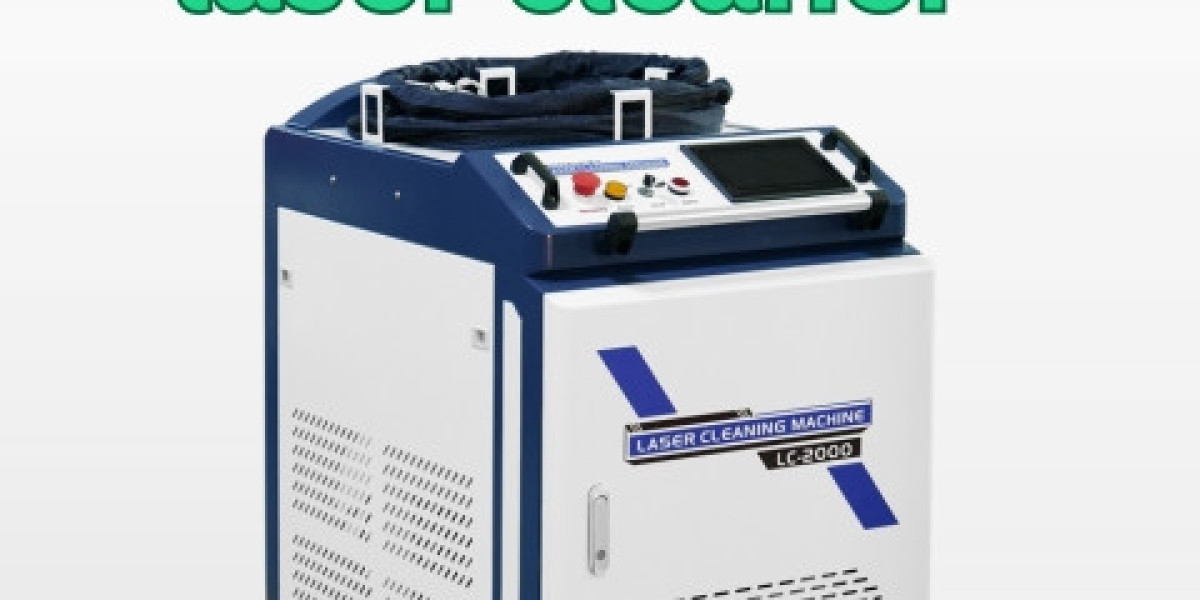This guide explores the world of laser cleaning, providing a detailed understanding of how a laser cleaner works, why industries rely on it, and where it is applied most effectively.
The Working Principle of a Laser Cleaner
A laser cleaner uses a high-energy laser beam directed at the contaminated surface. When the beam interacts with unwanted layers such as rust, paint, or oil, it heats and evaporates them instantly, leaving the base material untouched. Unlike mechanical or chemical methods, the process is non-contact and requires no abrasive materials or solvents.
The mechanism relies on the difference in absorption rates between contaminants and the base material. Rust, for example, absorbs laser energy quickly and breaks down, while the clean metal reflects most of the energy, ensuring that the surface remains intact. This controlled process delivers a uniform and precise cleaning result, which is why a laser cleaner is often considered one of the most advanced surface treatment methods available today.
Industries That Benefit from Laser Cleaner Technology
The versatility of the laser cleaner makes it suitable for a wide range of industries. It is not limited to one type of material or application but has proven its effectiveness across multiple fields.
Automotive Industry
In vehicle manufacturing and restoration, removing rust, paint, and grease is a routine task. A laser cleaner provides a fast and efficient way to prepare car frames, body panels, and engine components for coating or welding. Unlike traditional grinding, it does not thin the metal or leave scratches, making it a reliable option for preserving structural integrity.Aerospace Sector
Aircraft maintenance requires the highest level of precision. Paint removal on aircraft components, turbine blades, and landing gear can be handled with a laser cleaner without compromising the underlying metal. The non-contact nature of the process ensures safety while maintaining strict aerospace standards.Shipbuilding and Marine Maintenance
Corrosion is a major concern in ships and offshore structures. Saltwater exposure accelerates rust, making regular cleaning essential. A laser cleaner is highly effective in removing marine corrosion, ensuring that vessels remain seaworthy while minimizing downtime for repairs.Electronics Manufacturing
In the production of circuit boards and precision parts, contamination can affect performance. The laser cleaner allows manufacturers to prepare delicate surfaces without damaging small components, ensuring smooth assembly and performance.Cultural Heritage and Restoration
Beyond heavy industry, museums and restoration experts use the laser cleaner to remove dirt, smoke residue, or corrosion from historical artifacts. Since it can be adjusted to a very fine level, it is capable of cleaning delicate materials such as stone, wood, and metals without altering their original structure.
Why a Laser Cleaner Stands Out in Modern Manufacturing
Modern manufacturing requires speed, safety, and accuracy. The laser cleaner provides all three. Since the process is highly controlled, it minimizes the risk of material waste. It reduces the need for harmful chemicals and eliminates the production of secondary waste, making it environmentally sustainable.
Another standout feature is automation. Many industrial systems now integrate a laser cleaner into robotic arms or production lines, enabling continuous operation without manual intervention. This means surfaces can be cleaned and prepared at a pace that keeps up with high production demands.
Technical Insights into Laser Cleaner Operation
To fully appreciate the impact of a laser cleaner, it’s important to understand some of its operational aspects:
Pulse vs. Continuous Beams: Pulsed lasers are typically used for precise cleaning, as they deliver energy in short bursts that remove contaminants without heating the base material excessively. Continuous lasers, on the other hand, are better suited for larger surfaces that require consistent cleaning.
Power Levels: The efficiency of a laser cleaner depends on its power. Lower-powered systems are ideal for delicate tasks, such as cleaning electronic parts or cultural artifacts. Higher-powered systems are used in shipyards, factories, and heavy equipment maintenance.
Mobility: Portable laser cleaner units are increasingly popular, allowing workers to move equipment directly to the site of contamination. This eliminates the need to transport large or immovable objects.
Safety Measures: While a laser cleaner is safe when handled properly, protective eyewear and controlled environments are mandatory. The beam is powerful enough to cause harm if safety protocols are not followed.
Real-World Impact of Laser Cleaner Adoption
The adoption of laser cleaner systems has transformed industries in measurable ways. Manufacturers report significant savings in time and cost since the technology reduces the need for consumables such as abrasives and chemicals. The long-term maintenance of machinery has also improved, as surfaces cleaned with laser precision are better prepared for coatings, welding, and bonding.
In shipyards, the use of a laser cleaner has reduced turnaround times for vessel maintenance, allowing operators to keep ships in service longer. In the automotive industry, car restorers appreciate the ability to remove paint without harming original steel or aluminum, preserving classic vehicles more effectively.
Future Outlook of Laser Cleaner Technology
The demand for laser cleaner systems is expected to grow as industries continue moving toward sustainable and efficient methods. With advancements in laser optics, control systems, and power efficiency, future models will likely be more compact, faster, and capable of handling even more specialized cleaning tasks.
There is also an increasing interest in automated cleaning systems where a laser cleaner works in combination with robotics and AI-driven monitoring. This integration will ensure higher precision, reduced labor requirements, and the ability to adapt to complex industrial environments.
Final Thoughts
The laser cleaner has moved from being a specialized tool to a mainstream solution in industries worldwide. Its ability to remove contaminants with unmatched precision, while protecting the base material, makes it a cornerstone of modern surface treatment. From automotive shops to aerospace facilities and even museums, its applications continue to expand. As industries seek safer, faster, and more environmentally responsible cleaning technologies, the laser cleaner stands at the forefront, shaping the future of surface preparation and maintenance.



